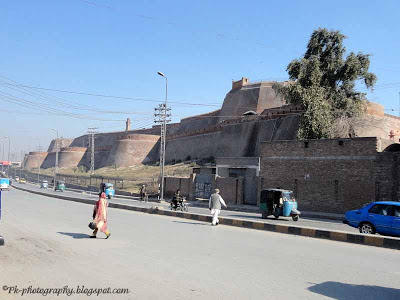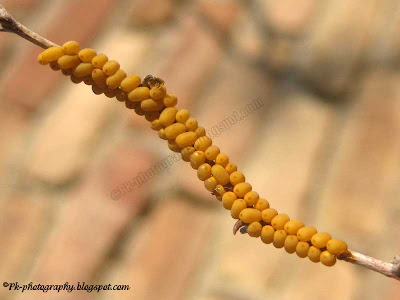A photography blog that focus on Pakistan natural beauty, people, culture heritage, customs and traditions, historical places, travel destinations, wildlife: flora and fauna.
Monochoria vaginalis
Monochoria vaginalis is a species of flowering plant in the family Pontederiaceae (water hyacinth family). It's known by a munber of common names, including lesser water hyacinth, heartleaf false pickerelweed and oval-leafed pondweed. It is an invasive aquatic plant, that grows in rice paddies and other water bodies. This is an annual or perennial herb growing in water from a small rhizome. The shiny green leaves are up to about 12 centimeters long and 10 wide and are borne on rigid, hollow petioles. The inflorescence bears 3 to 25 flowers which open underwater and all around the same time. Each has six purple-blue tepals just over a centimeter long. The fruit is a capsule about a centimeter long which contains many tiny winged seeds.
Qila Bala Hisar Peshawar
Qila Bala Hisar (قلعه بالا حصار) or Bala Hisar Fort is one of the most historic places of Peshawar. The word Bala Hisar is from Dari Persian, meaning, “elevated or high fort”. The name was given by the Pashtun King Timur Shah Durrani (1773–1793), who used the fort as the winter capital of the Afghan Durrani Empire, with the summer capital being in Kabul. The Sikh empire who conquered Peshawar in the early 19th century named it Samir Garh in 1834 but the name did not become popular.
The Fort has been the headquarters of the Frontier Corps since 1949.
Qila Bala Hisar Peshawar
 |
| Qila Bala Hisar Google Map |
Milk Vetch
Milk Vetch or Milkvetch is a common name used for the plants species in the genus Astragalus (milkvetches), family Fabaceae. The species here is most probably Astragalus exscapus. It is a perennial flowering plant, produces yellow colored flowers in spring . It has pinnately compound leaves, grows up to 12 inch long. It grows wildly along field sides.
Milkvetche (Astragalus exscapus )
Fallow Deer
The fallow deer (Dama dama) is a ruminant mammal belonging to the family Cervidae, subfamily Cervinae. This common species is native to western Eurasia, but has been introduced widely elsewhere. It's small than the stag, and can vary in color from reddish-brown with white spots in summer and grayish
brown in winter, to black brown or very light
variations. It prefers to graze in open pastures. It's a popular park deer, and can be found in deer parks and preserves. The following pictures are taken at Lahore Zoo.
Fallow Deer (Dama dama)
Swat Pakistan
The Swat (سوات), which because of its natural beauty is called the Switzerland of Pakistan, is a valley and a district in the Khyber Pakhtunkhwa, Pakistan. It is the upper valley of the Swat River, which rises in the Hindu Kush range. The capital of Swat is Saidu Sharif, but the main town in the Swat valley is Mingora. It was a princely state in Khyber Pakhtunkhwa until it was dissolved in 1969. The valley is almost entirely populated by ethnic Pashtuns. The language spoken in the valley is Pashto. Swat is famous for its beautiful high mountains, green meadows, water falls, lakes and River Swat, which is famous for its abundant trout fish.
Swat Pakistan
Posted by
Birdy Official
Labels:
Landscapes,
Pakhtunkhwa,
Pakistan,
Swat,
Travel destinations

 3 comments:
3 comments:
Subscribe to:
Posts (Atom)






























